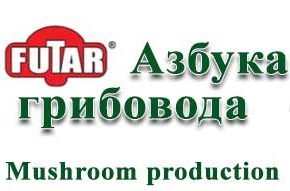Perforation substrate blocks
Perforation substrate blocks
It is necessary to cut holes in the oyster mushroom bags immediately after inoculation, if possible. Why is it so important to perforate the blocks as soon as possible?
The higher mycelium quality, the faster and more actively it grows colonizing the substrate. Aeration is crucial for mycelium development – air enters the holes and removes gaseous waste products – carbon dioxide and moisture through the holes.
The process of inoculation can be organized in such a way that one worker immediately carries bags away from the clean area in an incubator and hangs them. Then the holes can be cut (or punched). So the sequence of work could be blocks hanging (or putting on a rack), perforation, bringing in the next batch of blocks.
But this is possible only if you have a clean area directly attached to the incubator (or through the corridor, which is a part of clean zone and has been disinfected prior to inoculation). If you pile up the bags inoculated before the end of inoculation procedure right in the inoculation room, then immediately after the procedure they need to be moved into the incubator, wiped with a sponge soaked in a bleach solution (100g bleach for 1 liter of water) and perforated right after.
If you buy commercially made substrate blocks, after unloading and hanging them in the incubator, the room should be treated with disinfectant. After a couple of hours you can turn the ventilation on for two or three minutes, and only after this you can perforate bags.
What are the perforation types?
See photos and description:
- Round holes which are made using a special punch. It is made of iron pipe with about 3 cm in diameter and about 15 cm long, so it is convenient to handle. On one side of the tube is sharpened – this end is used for hole punching.
- Cross cuts – holes that are notched as diagonals of an imaginary square. Diagonal Length can be from 3 to 5 cm.
- Horizontal (if the blocks lie on the shelves) or vertical (when hanging).
- “Herringbone” – when the incisions are made at 45 degrees.
Incision length in the latter two cases is about 5-6 cm, not more, because after the cut plastic film usualy tears by itself for another 1-2 cm.
Number of cuts for one 10 kg bag
– 3-4 on every side- if double-sided perforation is required.
For every extra two kilograms of weight you need to add one cut on each side. Now many mushroom growers place double rows with single-sided perforations in order to save space. As for the shape, they can be made as described above. As for the quantity – perforation area should be about 4% of the total block surface.
It should be noted that the diameter of such substrate blocks should not exceed 22 cm, for proper gas exchange.
Some growers make substrate blocks with larger diameter, and perform the so-called “microperforation” on the reverse side using a homemade puncher made of small nails, resembling a haircomb. Through these small holes primordia try to erupt, but as they fail, they can die and rot under the plastic film.
Yields usually do not depend on the perforation shape, but the number of mushrooms in a cluster does. If the holes are small, but there are lot of them, many small clusters will form. This is useful if you are selling a prepackaged mushrooms on plastic plates.
If there are more cuts than necessary, the substrate moisture will evaporate faster than normal. The mycelium cannot utilize nutrients at low humidity to generate a sufficient number of mushrooms, so the overall yield may be lower.
